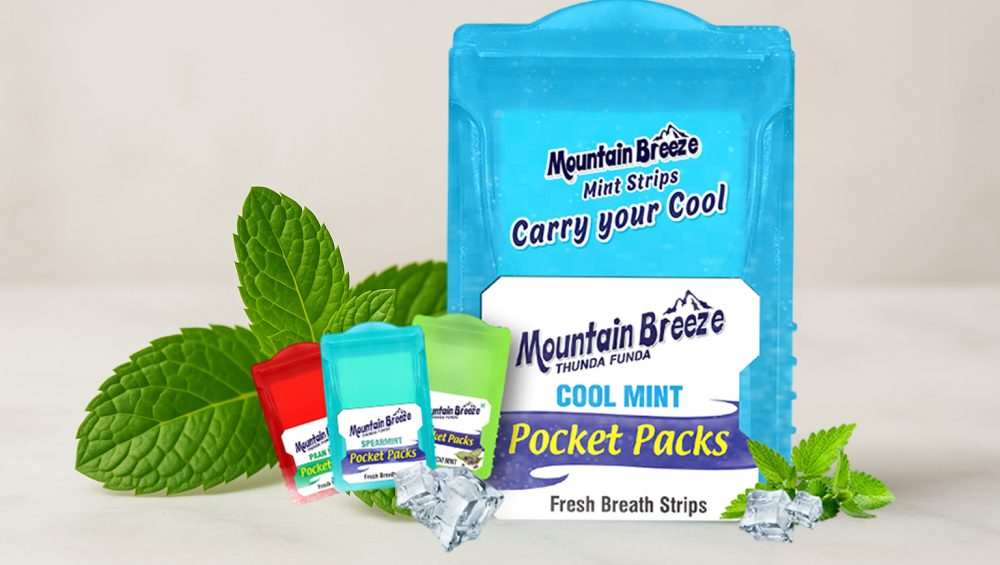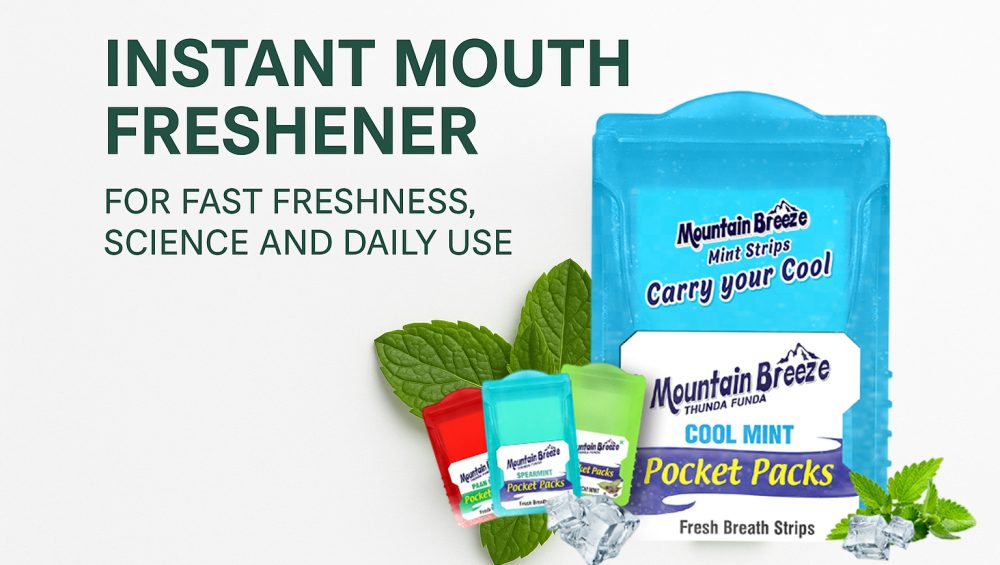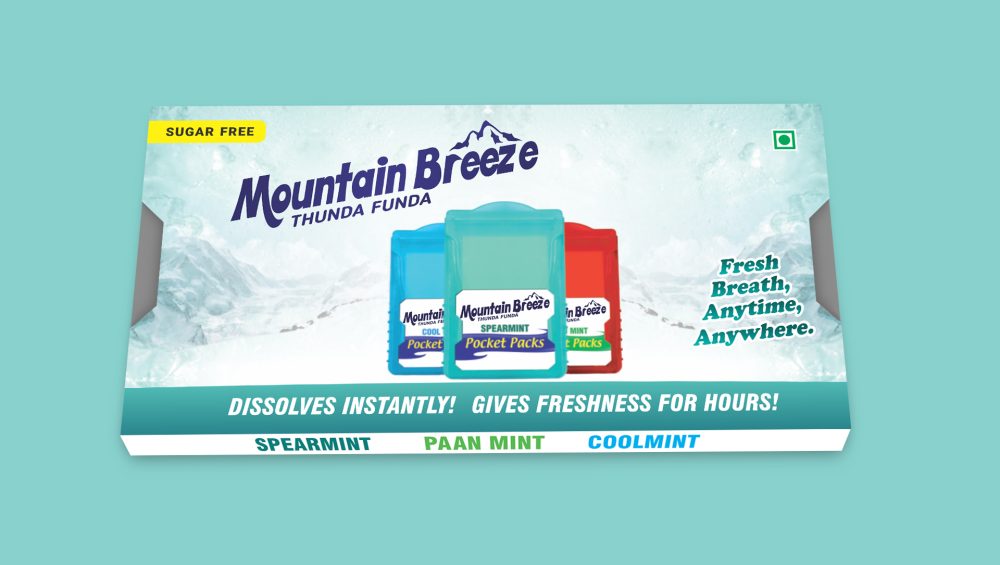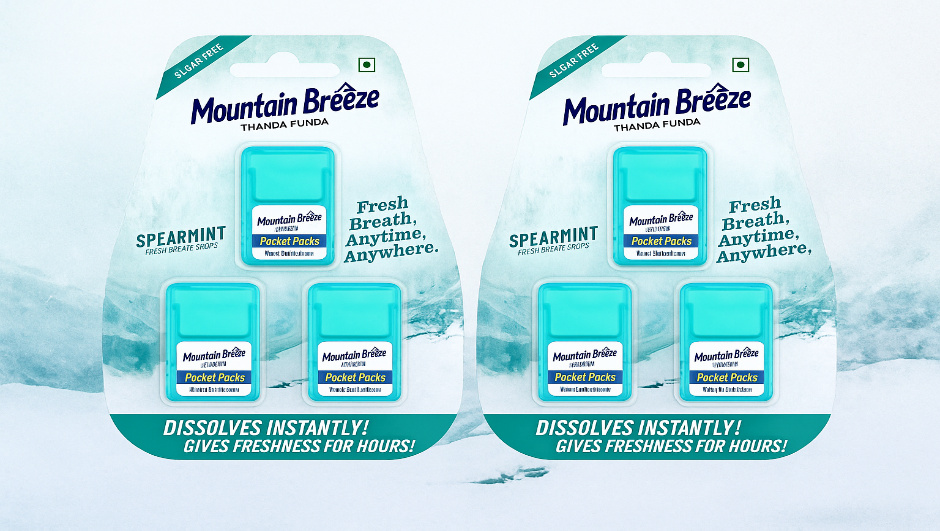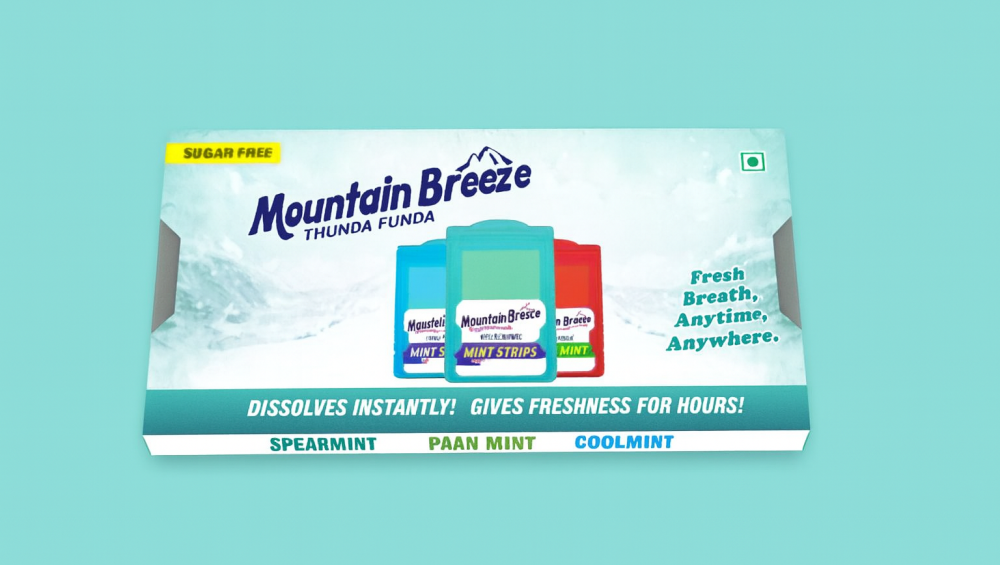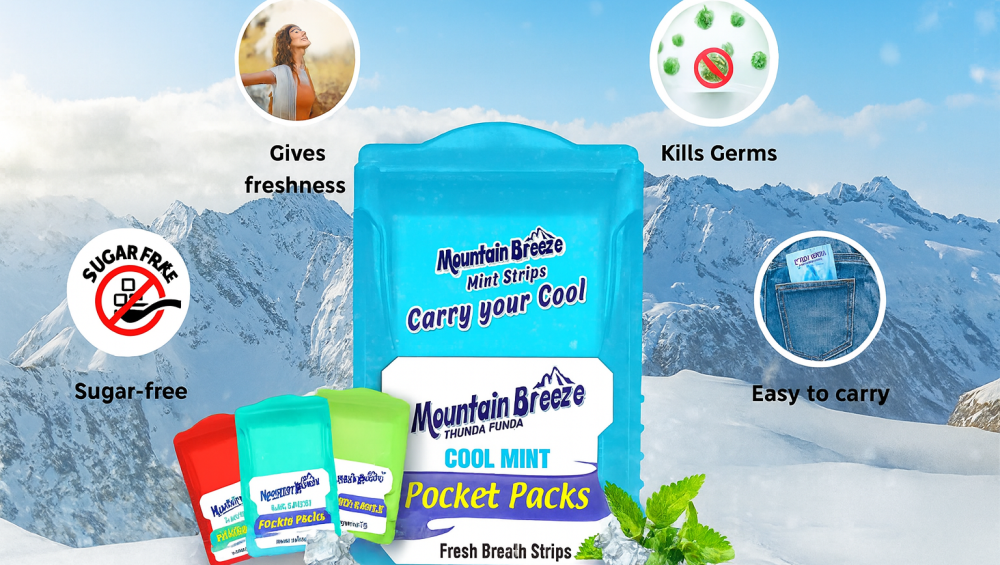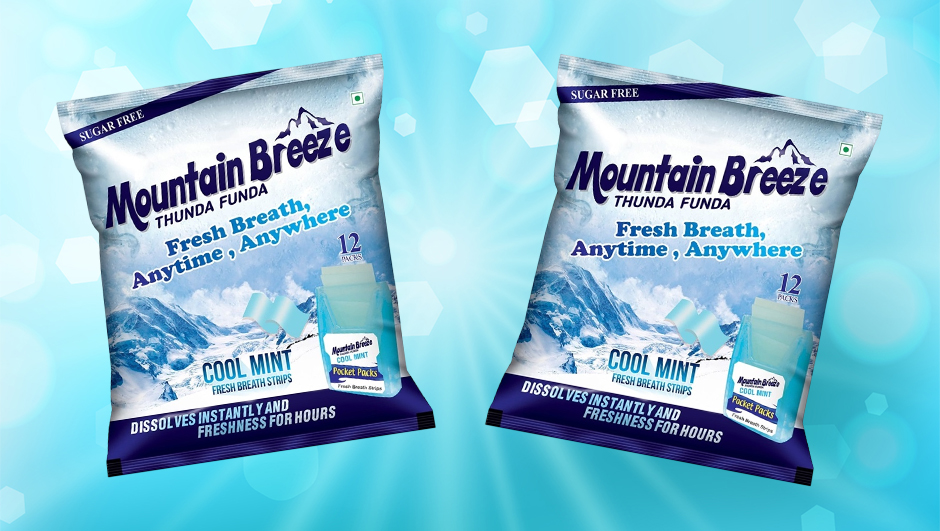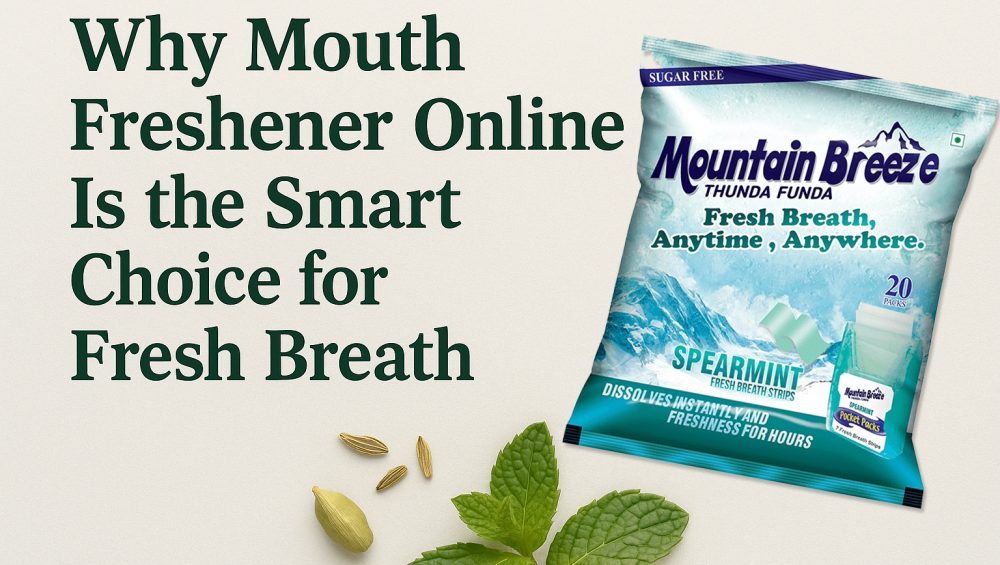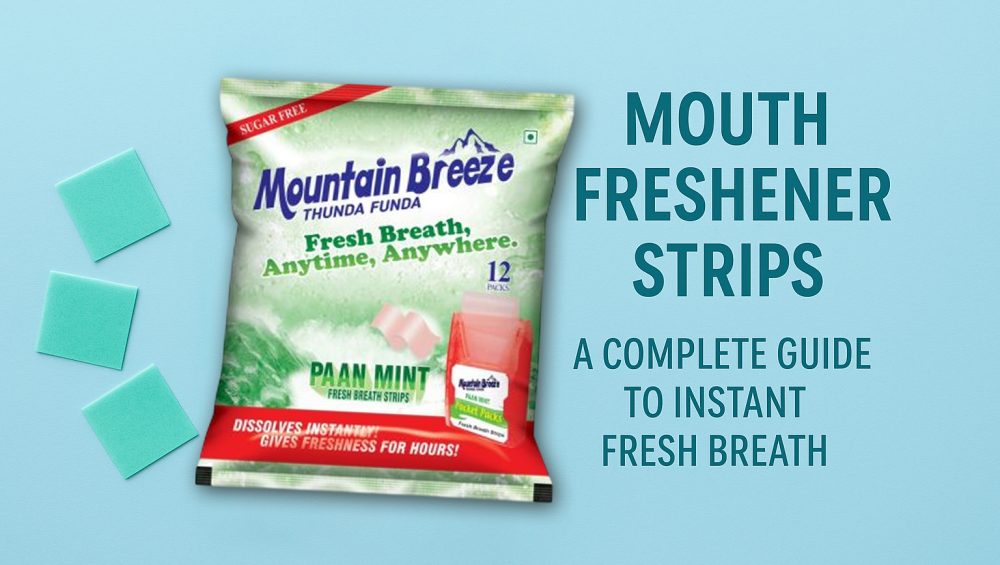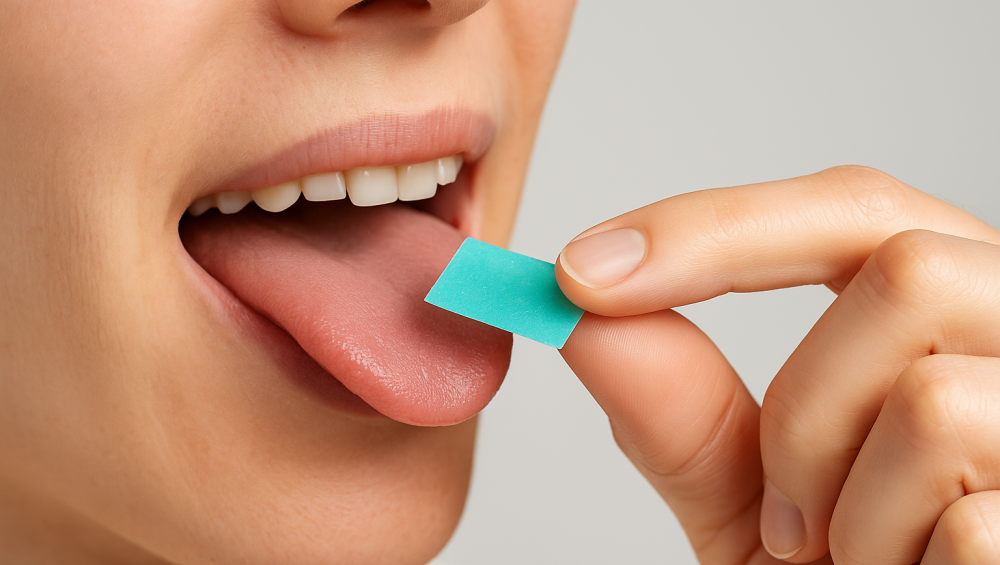Why Cool Mint Mouth Freshener Is Becoming Popular
A cool mint mouth freshener has turned into an everyday essential because individuals want quick freshness that feels clean, light and effortless. After eating foods with strong flavours like garlic, onion or heavy masalas, the mouth can feel dull and heavy. In these moments, the cooling mint flavour provides a soft chill that lifts the senses and resets the breath. People with busy schedules find it helpful because it fits easily into pockets, wallets, handbags and travel kits. Whether someone is in office meetings, college lectures or social gatherings, a cool mint mouth freshener brings a sense of instant confidence because the mouth feels noticeably cleaner. This simple convenience is one of the biggest reasons it has become widely preferred for daily routines without needing full brushing or mouthwash access
How Cool Mint Mouth Freshener Works
A cool mint mouth freshener works through a natural combination of cooling ingredients and aromatic mint oils. Foods that are rich in strong flavours often leave sulphur based compounds in the mouth which are responsible for unwanted breath. Mint extracts help mask these compounds while cooling agents create a refreshing sensation that makes the mouth feel light and awake. At the same time, the freshener increases saliva flow which is important because saliva is the mouth’s natural rinsing system. It helps clear tiny food particles that stick to the tongue or between the teeth and reduces the heaviness that often lingers after meals. This combined effect of cooling, cleansing and flavour balancing makes the freshness last longer and keeps the mouth comfortable through the day
Benefits of Using Cool Mint Mouth Freshener
Using a cool mint mouth freshener after meals can make the mouth feel noticeably fresher within seconds. The cooling flavour creates a clean sensation that cuts through strong tastes and reduces the heaviness that comes after spicy or oily foods. For individuals who interact with others regularly, fresh breath becomes an important part of personal confidence, especially before conversations, social settings or professional meetings. Because of its small size and convenience, it also becomes a dependable companion during travel, long work hours and outdoor eating when brushing is not possible. The light mint taste also helps reset the palate which is useful for individuals who shift between different flavours throughout the day. This makes the cool mint mouth freshener not just a breath refresher but a simple comfort tool that supports daily freshness
Ingredients Used in Cool Mint Mouth Freshener
A cool mint mouth freshener usually contains a blend of mint extracts, cooling ingredients, herbal aromatics and sugar free sweeteners. Mint extracts like peppermint and spearmint provide the signature freshness and help mask strong odours that develop after eating. Cooling agents create the crisp chill that cool mint products are known for and make the mouth feel clean for a longer period. Sugar free sweeteners enhance the taste without contributing to oral bacteria, which makes them suitable for daily use. Many formulations also include natural herbs like fennel, cardamom or clove that add smooth aroma and balance the flavour profile. Some modern blends even use antioxidant rich ingredients like tulsi, mulethi or green tea extract to offer mild comfort to the mouth. Together, these ingredients create a refreshing, soothing and enjoyable experience after every meal
Who Should Use Cool Mint Mouth Freshener
A cool mint mouth freshener is ideal for individuals who want quick breath freshness without relying on gum or liquid mouthwash. It helps professionals who spend long hours in meetings and want to maintain a clean presence throughout the day. Students who attend back to back classes also prefer it because it offers fast freshness without drawing attention. Travellers and individuals who frequently eat outdoors use it as a simple breath cleansing tool that fits in any bag. People who enjoy flavourful meals like street food, biryani, chaat or grilled dishes also benefit from the cooling taste that helps settle the palate. Anyone looking for a light, clean and refreshing boost after food can comfortably include a cool mint mouth freshener in their routine
Possible Side Effects of Cool Mint Mouth Freshener
Although a cool mint mouth freshener is generally safe for daily use, a few individuals may experience mild dryness because strong mint extracts can reduce natural moisture temporarily. Those who are sensitive to peppermint or spearmint oils may feel a strong cooling or slight burning sensation depending on the concentration present in the product. Individuals with sensitive digestion may also experience slight stomach discomfort if a large amount is consumed repeatedly within a short period. People with known allergies to herbs, flavouring agents or sweeteners should check the label before use to avoid unexpected reactions. For individuals who experience acidity or reflux, strong mint products might feel uncomfortable at times, so starting with a smaller amount is recommended to see how the body responds
How to Use Cool Mint Mouth Freshener Safely
The safest way to use a cool mint mouth freshener is to take a small amount after meals or snacks and allow the flavour to settle naturally. Individuals who are new to mint based products should begin with a small portion to understand their comfort level. Storing the product in a cool and dry place helps maintain its aroma and freshness for longer. Choosing sugar free variants is better for oral balance and daily use. Regular water intake supports natural saliva flow which enhances the freshness effect. Combining the mouth freshener with good habits like brushing twice a day and cleaning the tongue in the morning helps maintain better breath throughout the day
How to Choose a Quality Cool Mint Mouth Freshener
Choosing a good cool mint mouth freshener becomes easier when the ingredient list is clear and easy to understand. Sugar free formulas are more suitable for everyday use because they do not support oral bacteria growth. Balanced mint intensity ensures that the flavour feels refreshing but not overwhelming, especially for individuals with sensitivity. Products that offer longer lasting freshness help individuals who move through busy schedules with limited breaks. Herbal additions add natural aroma and make the flavour smoother and more enjoyable. Selecting a product based on these features ensures a better experience and supports daily breath freshness
Daily Habits That Improve Overall Freshness
Daily habits like drinking water frequently help maintain natural moisture in the mouth and support saliva flow, which plays a big role in overall freshness. Using a cool mint mouth freshener after meals adds a quick boost and keeps the mouth feeling clean between brushing sessions. Gentle tongue cleaning in the morning reduces odour causing buildup and helps maintain fresh breath for a longer time. Storing the freshener in an airtight container preserves its flavour, texture and aroma. Choosing milder mint options at night can also support comfort for individuals who feel strong mint intensity before sleep

